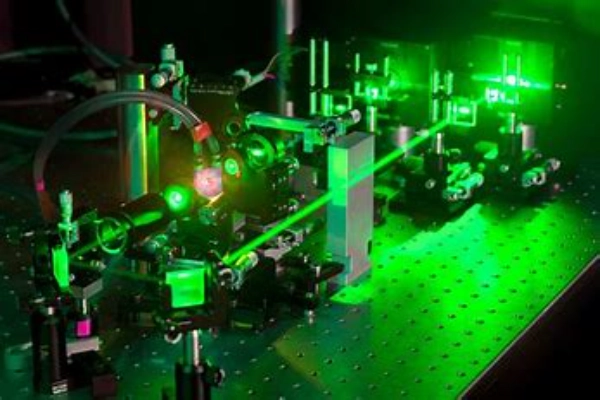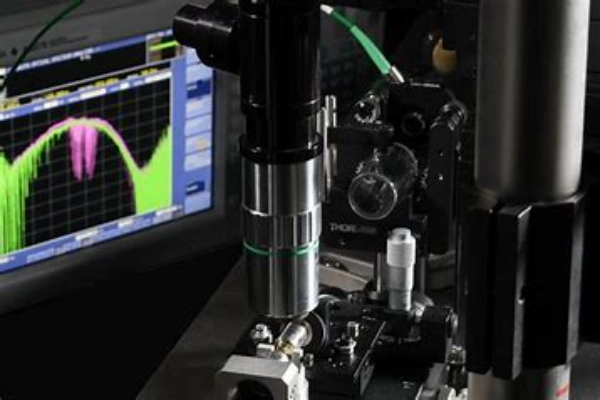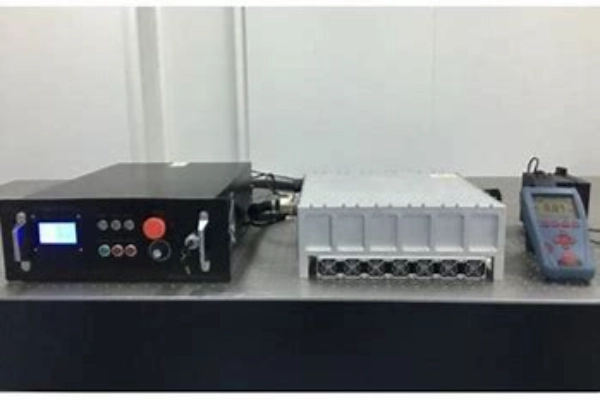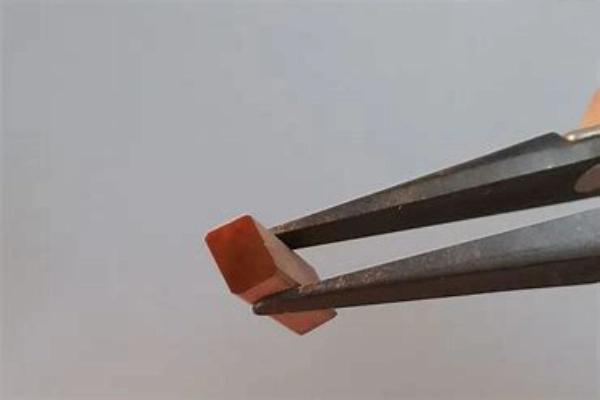An Introduction to Mid-Infrared Solid-State Lasers
Mid-infrared solid-state lasers, specifically in the wavelength range of 2 to 5 micrometers, have emerged as an indispensable tool for various applications, ranging from environmental monitoring to advanced military countermeasures. This expanse of possibilities is attributed to the unique properties and capabilities of these lasers.

The Intricacies of Mid-Infrared Lasers
The mid-infrared spectrum, a distinct segment of the electromagnetic spectrum, holds a myriad of possibilities for scientific and technological advancements. Nestled within this spectrum are the primary absorption lines of both organic and inorganic substances, making it a highly sought-after domain for a multitude of applications. Spectroscopy, for instance, relies heavily on this range due to its precision in distinguishing between different molecular structures, thereby enabling researchers to delve deeper into the mysteries of matter. Additionally, sensing applications, especially in the realms of environmental and biomedical monitoring, have been revolutionized by harnessing the unique properties of the mid-infrared spectrum.
Delving deeper into the tools that tap into this spectrum, the solid-state lasers operating in the mid-infrared range have proven to be superior compared to their diode or gas laser counterparts. Their superiority is not just limited to one aspect; they dominate in several. For starters, they boast of a significantly higher power output, ensuring they can cater to applications that require intense energy inputs. Moreover, the beam quality they produce is nothing short of impeccable, ensuring precision and accuracy in tasks that require a meticulous approach. But perhaps one of the most remarkable traits of these solid-state lasers is their extended lifespan. This longevity not only ensures a reduced need for frequent replacements, saving costs in the long run, but also ensures consistent and reliable performance throughout their operational life. In essence, the intricate dance between the exceptional characteristics of the mid-infrared spectrum and the unmatched prowess of solid-state lasers is paving the way for groundbreaking innovations across industries.

Emerging Applications of Mid-Infrared Lasers
Mid-infrared lasers are ushering in a new era of technological advancements, finding applications in diverse and crucial domains. Among these, the realm of Gallium arsenide (GaAs) sensing stands out as a testament to the prowess of these lasers. GaAs, a key component in advanced semiconductor applications, requires precise measurement tools to detect even the minutest variations in its structure. Enter mid-infrared lasers, which have emerged as invaluable allies in this space, allowing researchers to push the envelope of electronic technology further than ever imagined. With these lasers, semiconductor designs are evolving, resulting in more efficient and compact electronic devices that are rapidly changing the landscape of modern tech.
However, the applications of mid-infrared lasers don’t stop at electronics. The environmental sector, grappling with the challenges of climate change and pollution, has found a reliable companion in these lasers. They possess the unique ability to detect specific absorption lines of various gases, making them indispensable tools for environmental monitoring. Whether it’s tracking the escalating levels of greenhouse gases that exacerbate global warming or pinpointing harmful pollutants tainting our air and water, mid-infrared lasers are at the forefront of efforts to ensure a sustainable and green future.
But the versatility of these lasers goes even further, extending to the defense sector. Modern warfare and defense mechanisms require tools that can provide an edge in the battleground. Mid-infrared lasers rise to this occasion, playing a pivotal role in advanced countermeasure systems. They’re not just tools but vital components in missile defense strategies, where they work by confusing or even disabling incoming threats, enhancing a nation’s protective measures. Moreover, in an age where data is as critical as any weapon, these lasers facilitate secure communication systems, ensuring that the integrity of crucial battlefield information remains uncompromised. In essence, the sweeping range of applications of mid-infrared lasers, from semiconductors to environmental monitoring to defense, underscores their transformative potential in the contemporary world.

Spotlight on Crystals: Cr:ZnS and Cr:ZnSe
In the realm of laser technology, the choice of materials plays an indispensable role in defining the efficacy and range of applications a laser system can cater to. Among the various materials used, the spotlight has recently been cast on two specific crystals: Cr:ZnS and Cr:ZnSe. Doped with chromium, these crystals possess unique lasing properties that have ushered in significant advancements in mid-infrared laser technology.
Chromium-doping is a process that involves introducing chromium ions into a crystal lattice. This introduction results in modifying the properties of the crystal to make it more suited for certain applications. In the context of Cr:ZnS and Cr:ZnSe, the chromium doping grants them broad tunability within the mid-infrared range. This tunability means that these crystals can produce or amplify light over a range of different wavelengths, providing the flexibility required for a variety of tasks.
Cr:ZnS, for instance, has garnered attention for its remarkable attributes. Its thermal stability stands out as a significant advantage in scenarios that require prolonged or high-intensity laser operations. Think about complex medical procedures or industrial applications where consistent laser performance is non-negotiable. The impressive thermal attributes of Cr:ZnS ensure that the crystal doesn’t degrade quickly under high temperatures, thereby prolonging the laser’s lifespan and reducing maintenance or replacement costs. Another distinctive trait of Cr:ZnS is its ability to function efficiently with minimal cooling. This characteristic not only simplifies the operational logistics but also widens its adaptability, allowing it to be used in diverse environmental conditions. Whether it’s a meticulously controlled laboratory setup or a more challenging field operation, Cr:ZnS, with its broad tuning range, emerges as the crystal of choice for various laser systems.

On the flip side, Cr:ZnSe showcases its strengths in a different set of attributes. The extended tuning capabilities it possesses are nothing short of revolutionary. When paired with its power-packed performance in terms of light emission, it opens doors to applications that demand high precision. A scenario that demands light of a very specific wavelength, for instance, diagnostic procedures that require pinpoint accuracy, would benefit immensely from a laser system equipped with Cr:ZnSe. Its ability to provide such precise control over the emission wavelength ensures that the laser output can be tailored perfectly to suit the task at hand.
To put things into perspective, imagine the vast expanse of applications that mid-infrared lasers cater to – from medical imaging to industrial machining, from scientific research to military applications. The choice of the crystal in the laser system can determine the difference between an average outcome and an optimal one. In this light, the advancements brought about by Cr:ZnS and Cr:ZnSe crystals cannot be understated. Their distinct properties, derived from chromium doping, not only enhance the performance of laser systems but also broaden the horizon of what’s achievable with mid-infrared lasers. As research continues and technology progresses, it’s evident that these crystals will remain at the forefront of innovations, driving breakthroughs and facilitating a future where lasers play an even more integral role in shaping our world.

Looking Ahead: The Future of Mid-Infrared Solid-State Lasers
The evolution of mid-infrared solid-state lasers is closely intertwined with the ever-expanding boundaries of material science. As researchers dive deeper into the intricacies of materials, unveiling their latent properties and discovering novel ways to harness their potential, the efficiency, power, and range of these lasers are set to witness unprecedented growth. Furthermore, in a world driven by technology, where industries ranging from healthcare to telecommunications, defense to space exploration, are vying for increasingly sophisticated tools, the significance of these lasers comes into sharp focus.
A particularly promising avenue is their potential in enabling non-invasive diagnostic tools in the medical field, where early detection and treatment can save countless lives. Similarly, in the realm of environmental science, as concerns over climate change escalate, these lasers could be instrumental in developing advanced monitoring systems to track pollutant levels or measure greenhouse gas concentrations with unmatched precision. Their role in enhancing secure communication systems, especially in defense and space sectors, cannot be overlooked either, where the margin for error is minuscule.
In essence, the confluence of cutting-edge material research and the burgeoning demand across diverse sectors is forging a trajectory of growth and innovation for mid-infrared solid-state lasers. As the tapestry of their applications expands, it will not only redefine existing paradigms but will also catalyze solutions that were once deemed implausible. The horizon is vast, and the possibilities, limitless.
Conclusion
Mid-infrared solid-state lasers, with their unparalleled capabilities and diverse applications, are shaping the future across multiple sectors. Whether it’s ensuring a sustainable environment, advancing semiconductor research, or fortifying defense capabilities, these lasers, especially when combined with potent crystals like Cr:ZnS and Cr:ZnSe, are at the forefront of technological advancements
FAQs
- What is the primary advantage of using mid-infrared lasers in environmental monitoring?
- The ability of these lasers to detect specific absorption lines of gases ensures accurate measurements of pollutants and greenhouse gases.
- Why are Cr:ZnS and Cr:ZnSe crystals important in the context of mid-infrared lasers?
- These crystals are doped with chromium, providing unique lasing properties and broad tunability in the mid-infrared range.
- How do mid-infrared lasers contribute to military countermeasures?
- They can be employed in missile defense systems to confuse or disable threats and ensure secure communications on the battlefield.
- What distinguishes Cr:ZnS from Cr:ZnSe crystals?
- While both crystals offer broad tunability, Cr:ZnS is known for its thermal stability, whereas Cr:ZnSe provides extended tuning capabilities with high power output.
- In which segment of the electromagnetic spectrum do mid-infrared lasers operate?
- These lasers specifically operate in the wavelength range of 2 to 5 micrometers, where many substances have their primary absorption lines.







